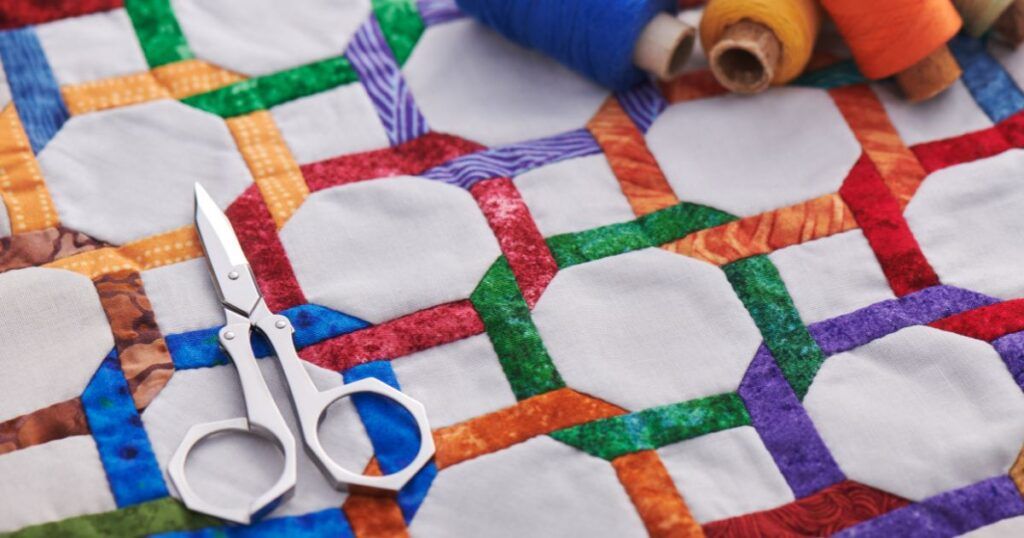Pinning Tips | Lessons

Download Instructions: Click here to download a .pdf of this lesson. Problems downloading our .pdf? Click here for .pdf troubleshooting tips.
Pinning Units Without Points or Angled Seams
When joining seamed pieces without points or angled seams (Diagram I), butt opposing seams together and pin at an angle to secure. (Diagram II, right handed — Diagram III, left handed). VERY IMPORTANT: Take at least one stitch past the seam line before pulling the pin. This will insure that the seams do not separate as you sew over them. (If you have pinned as shown in the diagram, there will be room for one or two stitches before having to pull the pin.)
Diagram I
|
Diagram II |
Diagram III |
Pinning Units With Matching Points
There are two steps involved when pinning seamed pieces with points that must be matched (Diagram IV). (Make sure seam allowances are opposing before pinning units together.)

Diagram IV
Step 1.) Referring to Diagram V, insert pin through the wrong side of the fabric where the two seams cross and form a point. Carefully insert the pin through the next unit right side of fabric, at the tip of the point. Push the pin through both units until the head is flush with the fabric.

Diagram V
Step 2.) Holding the first pin securely, insert another pin on each side of the point, through the seam allowances. (Diagram 6) Notice how pins are turned in opposite directions. This technique helps to keep the points aligned properly. After pinning securely on each side, remove the center pin. Begin sewing at the edge and continue until you are as close as possible to the first pin. Do not sew over the pin. Remove the pin and continue sewing until you are as close to the second pin, without sewing over it, as possible. Remove the pin and continue sewing to the other edge. (Hint: Sew one or two threads above the point when sewing the seam allowance. This will allow room for turning and pressing.)

Diagram VI








Join the Conversation!